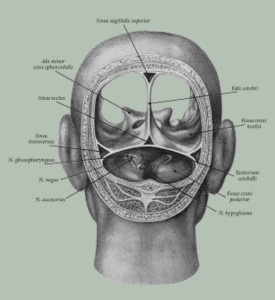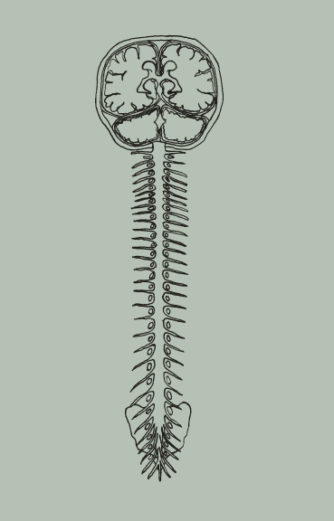WHAT IS THE UPLEDGER CRANIOSACRAL THERAPY?
CranioSacral Therapy is a manual therapy. It can be used to treat not only the patient’s body, but the whole person as well. The characteristic feature of CST is a gentle touch. The therapist works in a non-invasive way, using a gentle pressure of no more than 5 grams. Through tissues the whole craniosacral system is affected.

The craniosacral system is responsible for the normal development and functioning of the central nervous system. It is comprised of structures which surround, support and protect the brain and the spinal cord. These structures are, for example: cranial bones, cranial and spinal membranes, cerebrospinal fluid, and they are the focus for a CranioSacral practitioner. By applying a gentle touch, the practitioner may directly influence the craniosacral system. Indirectly, the functions of the nervous, muscular, fascial, bony, endocrine, digestive, respiratory, and lymphatic system can also be influenced. Therefore, this type of therapy is recommended to individuals who are suffering from a variety of conditions. CranioSacral Therapy supports and enhances the self-healing mechanism. Therefore, it can be applied regardless of the patient’s age and condition. If appropriately adapted, CST techniques can also be used to treat newborns and the elderly alike. To learn more about the CranioSacral Therapy, go to the Publications tab.
THERAPEUTIC SESSION
A therapeutic session begins usually by allowing the client to lie him- or herself down in the supine position. The client remains fully clothed at all times.

Gently and non-invasively, the therapist performs a whole body evaluation. CST offers a wide range of techniques, including a hand(s)-on contact with the patient’s body, specific and light compression or traction of the cranial bones applied in the area of restriction, following the patient’s involuntary movements, direction of human energy field, or a combination of all of the above. Although the main focus of craniosacral techniques is on the dura – a waterproof sac which surrounds and protects the brain and the spinal cord – the function of the dura can be, and usually is, influenced by other parts of the body. That is why the whole patient’s body is evaluated. When performing the techniques, the therapist’s hands are tuned into the patient’s bony system, but it is primarily the soft tissues and fluid flow that the therapist focuses his/her intention and attention on. According to the rules of mechanics, normal movement, and fluid flow in particular, underlie health. By optimizing fluid exchange, the therapist can enhance physiological processes and trigger the self-healing mechanism. The therapist’ role is to enhance this effect by reducing connective tissue restrictions, improving its flexibility, stretchability, moisturization and elasticity. These restrictions can be the result of a mechanical or emotional trauma, tissue function disorders, inflammation (caused by toxins or underlying corrective processes) or a pathology. On the other hand, a system in which the flow of fluids has been disturbed is more prone to the development of pathology.
A therapeutic session is a process strongly rooted in the knowledge of anatomy, physiology, and biomechanics, but in many respects it is also a creative process, the outcome of which is equally dependent upon both the patient and the therapist. However, before deciding on this form of therapy, it should be emphasized that it is the patient who makes decisions, formulates the goal for the therapy, and is largely responsible for the success of the healing process. The therapist’s role is more of a guide who supports the self-healing properties, and the patient’s ‘inner physician’. To obtain this purpose, the therapist uses his/her palpatory skills and dialoguing techniques.




